What Type of Art Was Popular When Roy Lichtenstein First Start Creating His Art in the 1960s?
Collecting Guide: 11 primal things to know nigh Prints & Multiples
From woodcuts to lithographs, originals vs editions, the importance of dissimilar types of newspaper, and much more than besides. Illustrated with standout works offered at Christie's
- ane
A impress is any work of art fabricated in multiple iterations, created through a transfer process. At that place are many different types of prints, and the process is constantly evolving, but the 4 best-known techniques are etching, lithography, screenprint and woodcut.
Etching: Using an carving needle, an artist scratches an image onto a metallic plate covered with wax. This plate is then submerged in acid, which eats into the metal exposed by the scratched lines. The longer the plate is left in the acrid, the deeper and darker the line will exist. The plate is cleaned, inked, and cleaned once more, leaving only the incised lines filled with ink. Dampened paper and a protective cloth are placed over the plate, which is squeezed through an etching press — the pressure forcing the newspaper into the etched lines to choice upwards the ink. The paradigm is printed in contrary, and an indentation, known as the 'plate mark', is left by the plate's edges.
Carving has frequently been used to achieve extremely delicate black and white images, from the Old Master period through to modernistic times. Rembrandt famously used this technique to achieve atmospheric furnishings, and Lucian Freud connected the tradition into the 21st century.
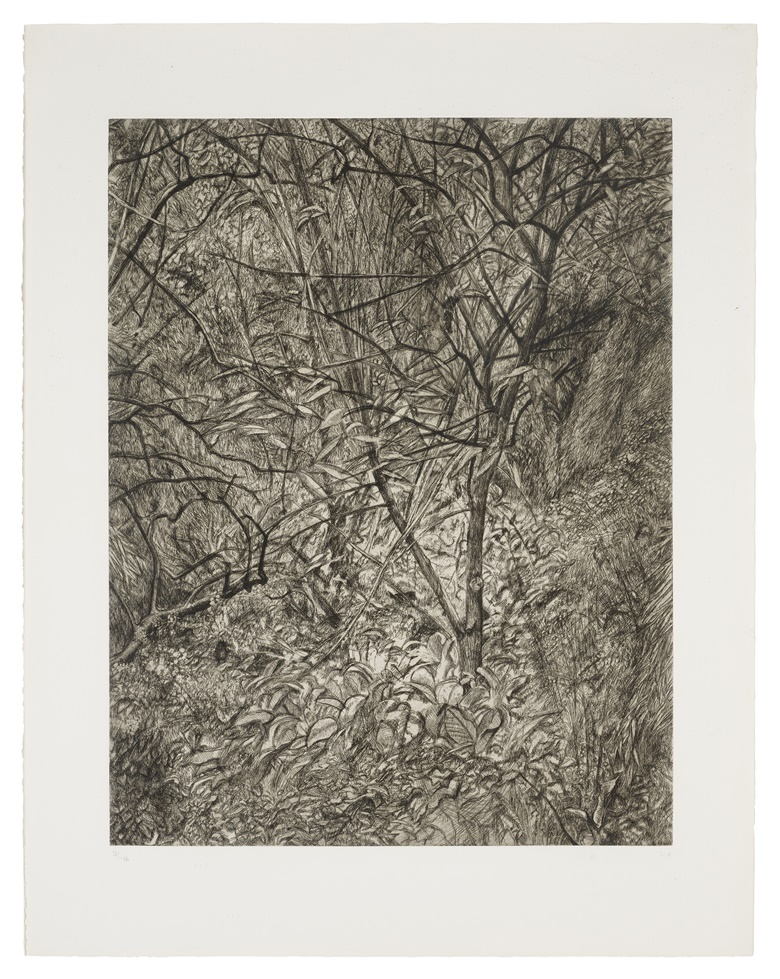
Lithography: The artist draws onto stone using a grease-based medium — usually special lithographic crayons, or greasy ink known as tusche. The rock is and then treated with a chemical solution that ensures the prototype volition attract printing ink, and that blank areas repel ink and attract water. A solvent 'fixes' the image, and the surface is dampened with water. Oil-based ink is then practical to the stone with a roller, adhering only to the image. Finally, the stone is placed on a lithographic printing and covered with damp newspaper and board — a force per unit area bar ensuring force is evenly applied across the image. The image is printed in reverse, with split stones used for complex images of multiple colours.
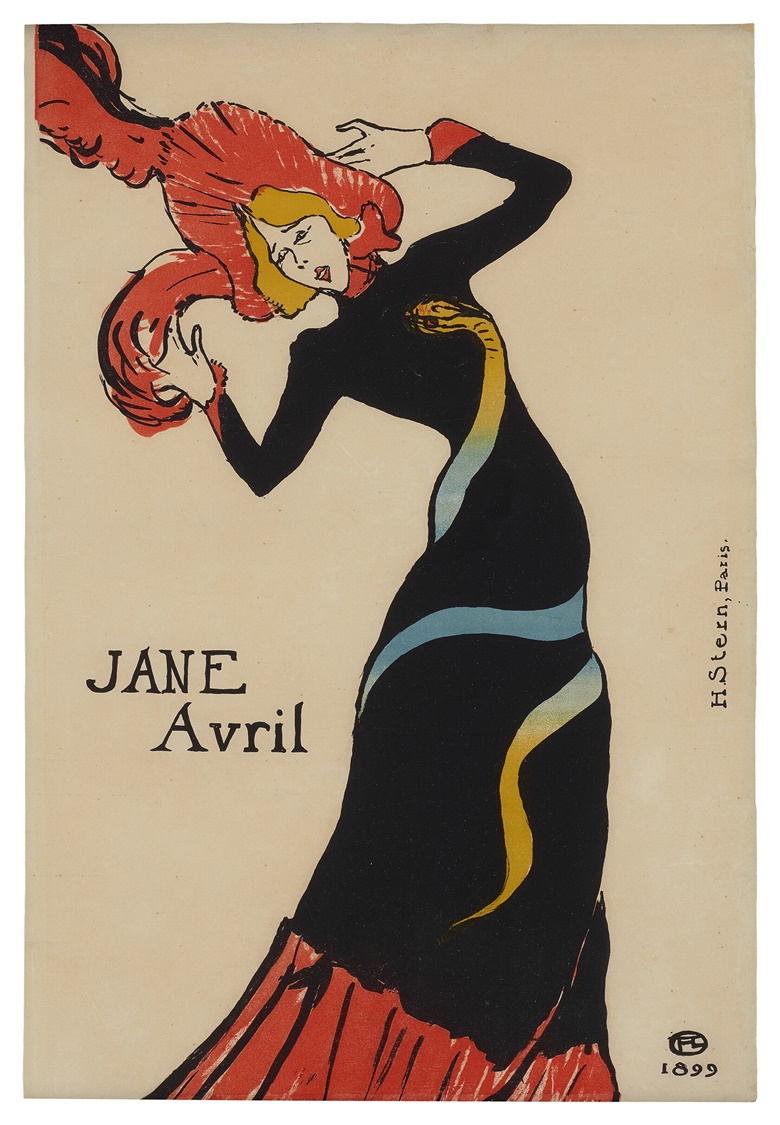
Lithography opened up printmaking to artists otherwise reluctant to learn the technical skills needed to create woodcuts or etchings, since many of the same tools, such as brushes and pencils, can be used. Lithography was offset fabricated famous by Henri de Toulouse-Lautrec in the 19th century, but has been embraced past many of the major artists of the Post-War period, including Pablo Picasso, Joan Miró, David Hockney and Jasper Johns.
Screenprint: An prototype is cutting into a sheet of paper or plastic picture show, creating a stencil. This stencil is and then placed in a frame, which has a layer of fine mesh stretched beyond it, forming a 'screen'. A canvass of newspaper is placed below the screen, and ink is pushed through the stencil from above, using a rubber blade or squeegee. Merely cut-out portions of the stencil print. In add-on to stencils, a photographic paradigm can be reproduced on the screen using light-sensitive gelatins. This was a hugely important innovation for Andy Warhol and other members of the Pop generation, who would appropriate commercial photographs and popular images in tandem with the technique.
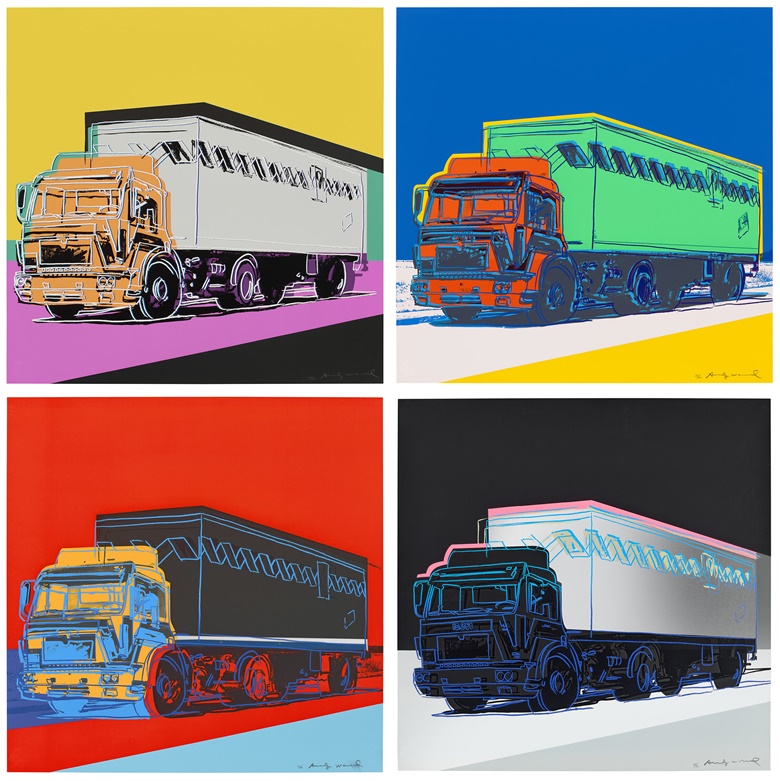
Woodcut: An image is sketched on a block of wood before the surface is carved into with gouging tools. The resulting raised portions of the cake are then coated in ink using a roller. A canvass of newspaper is placed on top and force per unit area is applied, leaving an impression of the cake's raised areas in reverse. Woodcut is the oldest printmaking process. It was of particular interest to the German Expressionists including Ernst Ludwig Kirchner, and it continues to be relevant today — artists such as Donald Judd, Damien Hirst and Helen Frankenthaler accept all used it.
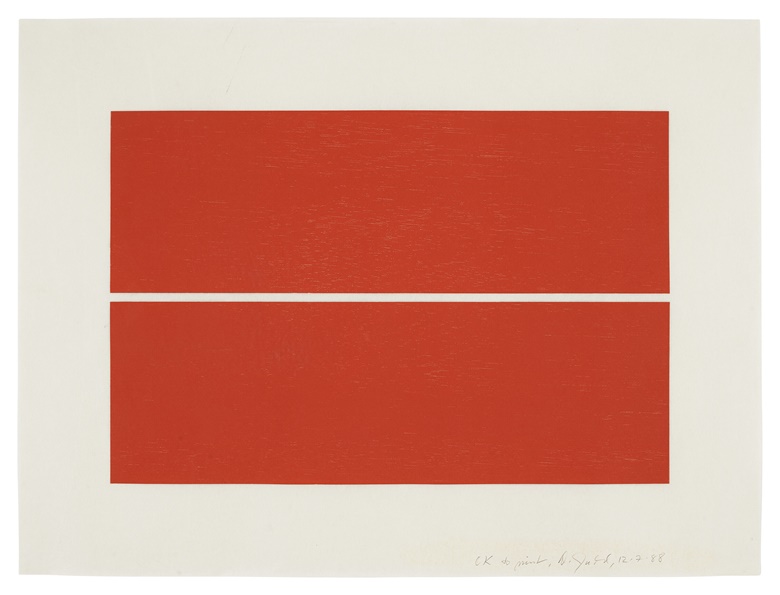
- 2
Although printmaking involves reproducing an image, a impress is more than than just a re-create of an original. Fine art prints are something else entirely, resulting from a close collaboration between the artist and the print studio. Printers — the people who work with the artist to produce an edition — are highly skilled technicians, and are often artists in their own correct.
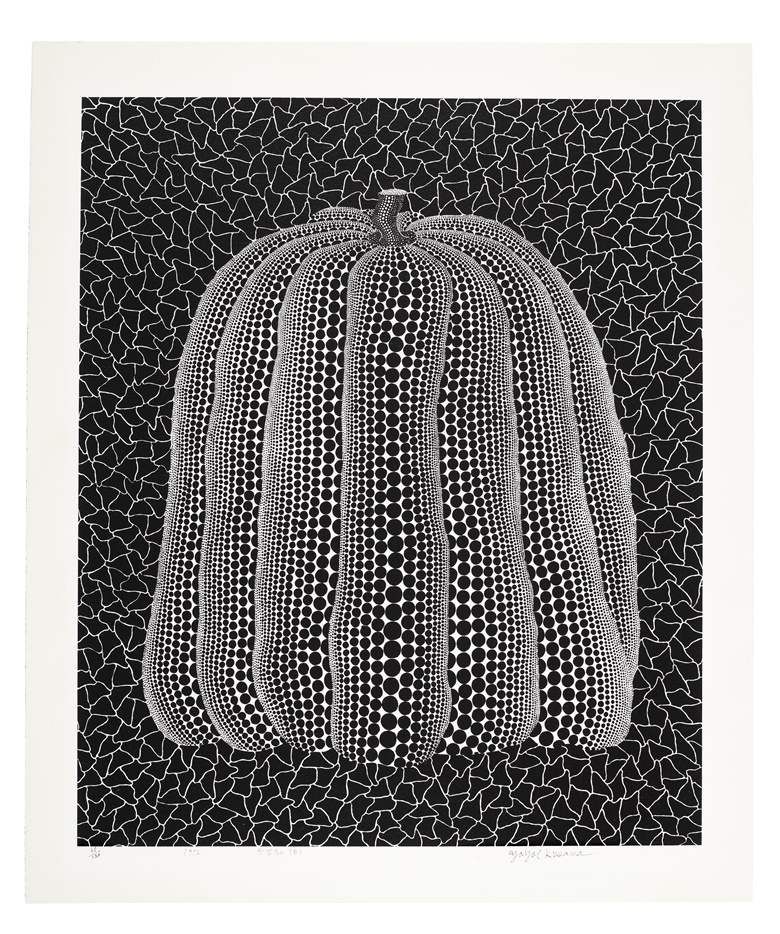
Prints are not made in large production runs intended solely for commercial sale. A limited number (known as an edition) are produced, with prescribed routes for initial auction — either through the artist, a commercial gallery or a publisher. As a outcome they are true works of art, and every bit important to the artist as drawings or other works on paper.
- 3
Artists make prints for a variety of reasons. They might be drawn to the collaborative nature of the print studio, or the potential for innovation the medium offers, or for a print's potential to document each stage of a creative procedure. Prints can offer a completely different creative outlet to the artist's principal working method.
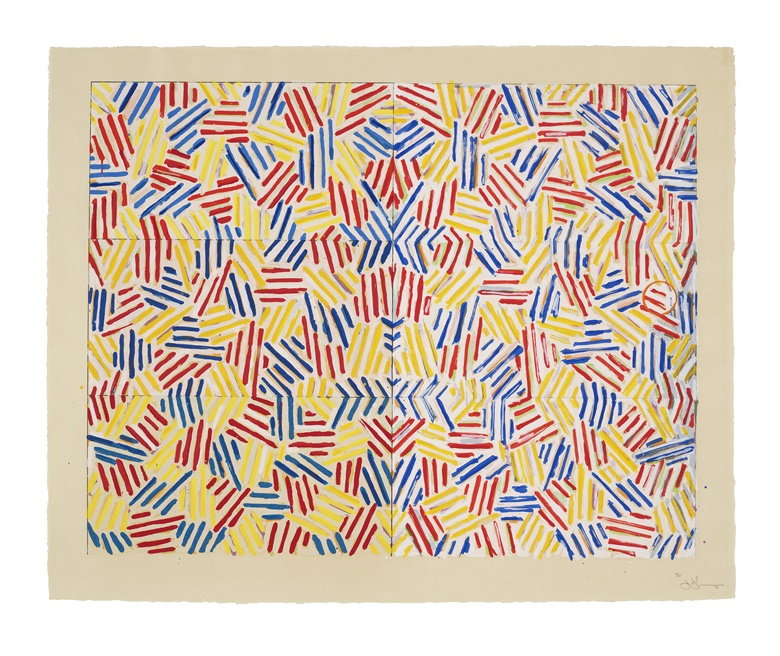
Lucian Freud would create etchings merely in blackness and white following his days in the painting studio, while Ellsworth Kelly applied the same captious understanding of colour and form to his editioned piece of work. Some artists consistently make prints for their entire career — Jasper Johns and Pablo Picasso are famously prolific examples —while others come to printmaking in bursts of activity, such as Barnett Newman. Typically these periods tin be aligned to working with a item print workshop.
- 4
An 'original' print is technically a unique work given information technology is by and large produced every bit a limited number of impressions (collectively known as an edition), and each impress is given an edition number, typically written every bit a fraction — for example, 24/50. The number to the right of the slash indicates the edition size (in this case, l), while the figure to the left is the individual impress's number.
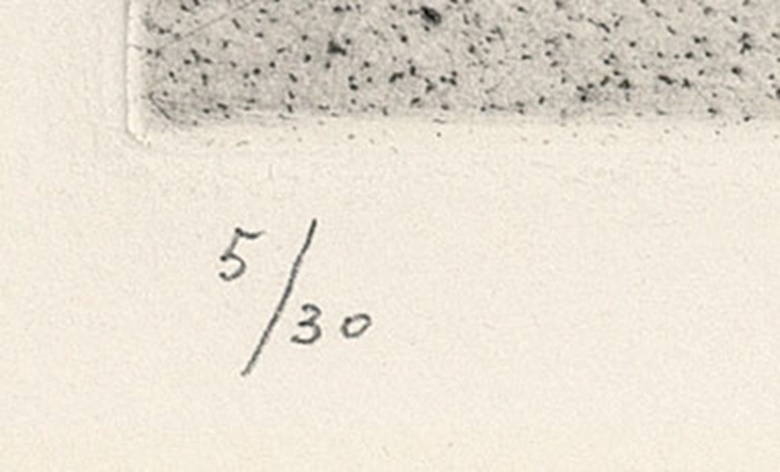
An creative person may too produce a limited number of artist'south proofs, often marked A/P, that are identical in nature to the standard edition. Here again, fractions may exist used to indicate the total number of proofs, and the print number (eastward.yard. A/P i/4). Other proofs may be made at an earlier phase, as the artist and printer develop an paradigm or test dissimilar compositions. These are known every bit state proofs, trial proofs or colour proofs. These can be unique, with differences in colour combinations, paper types or size. Andy Warhol started to sell his trial proofs equally unique colour-combinations dissever from the edition, and they're now some of the nearly coveted works in his print market.
When the image is perfected, a proof is made and signed B.A.T. (an abbreviation of the French bon à tirer, or 'prepare to print'). The residue of the edition is matched to this image, which is unique and traditionally kept past the printer.
Christie's defines an 'original print' as a limited-edition print by an artist that conforms to other prints in their catalogue raisonné, or matches other confirmed examples of the print past the artist. Our catalogue entries volition e'er explain how we take reached the decision that a print is an authentic original. We give the artist's name, the title of the work, what type of print it is (e.thousand. a lithograph, etching or screenprint), and the twelvemonth it was made. Finally, we indicate how the work is numbered, and whether information technology is from the standard edition or a proof. We also listing where applicable in the literature field the advisable catalogue raisonné numbers for the piece.
- 5
A sign of a true impress specialist is not only their involvement in technique simply likewise their obsession with newspaper. Our cataloguing information volition describe what type of paper a print is on, and will describe a watermark if it'southward present.
The selection of paper is an of import part of the printmaking process because it can straight influence the nature of what the printed image looks like. Johns is famous for having pushed for higher quality, heavier paper for his prints, while Warhol loved cheaper, thinner paper for his Soup Tin canprints from the 1960s to emphasise that they were meant to be enjoyed by the masses.
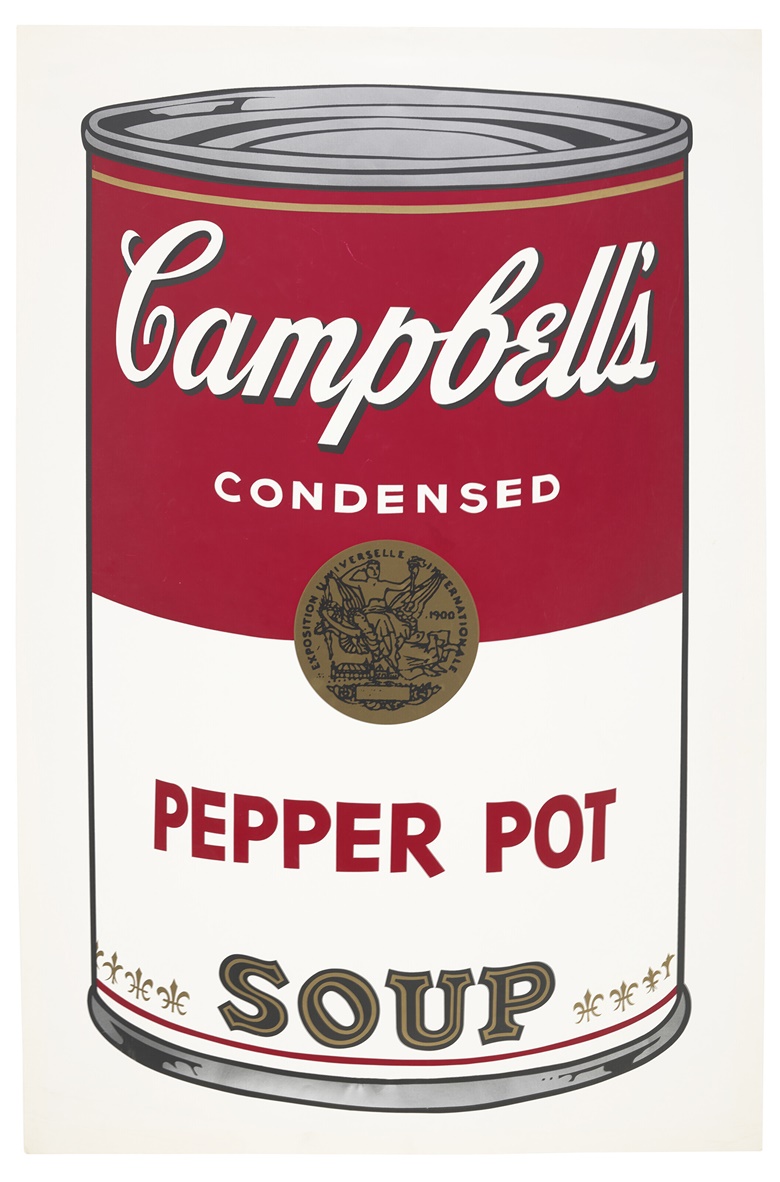
Our condition report as well notes whether an item is the full canvas or with full margins, which means that the paper has not been trimmed in some mode, itself an issue that affects the value.
- 6
Christie'south cataloguing also indicates where a piece of work was published — namely the studio where a print was made. These workshops can be huge production studios with big-calibration equipment or small-scale operations with simply a few employees. Some really famous names to pay attending to for Post-War and Contemporary prints are ULAE in West Islip, Long Island Tyler Graphics in Mount Kisco, Gemini One thousand.E.Fifty. in Fifty.A., and Paragon Press in London. That'due south just a small selection, however, and we are always finding out well-nigh new studios.
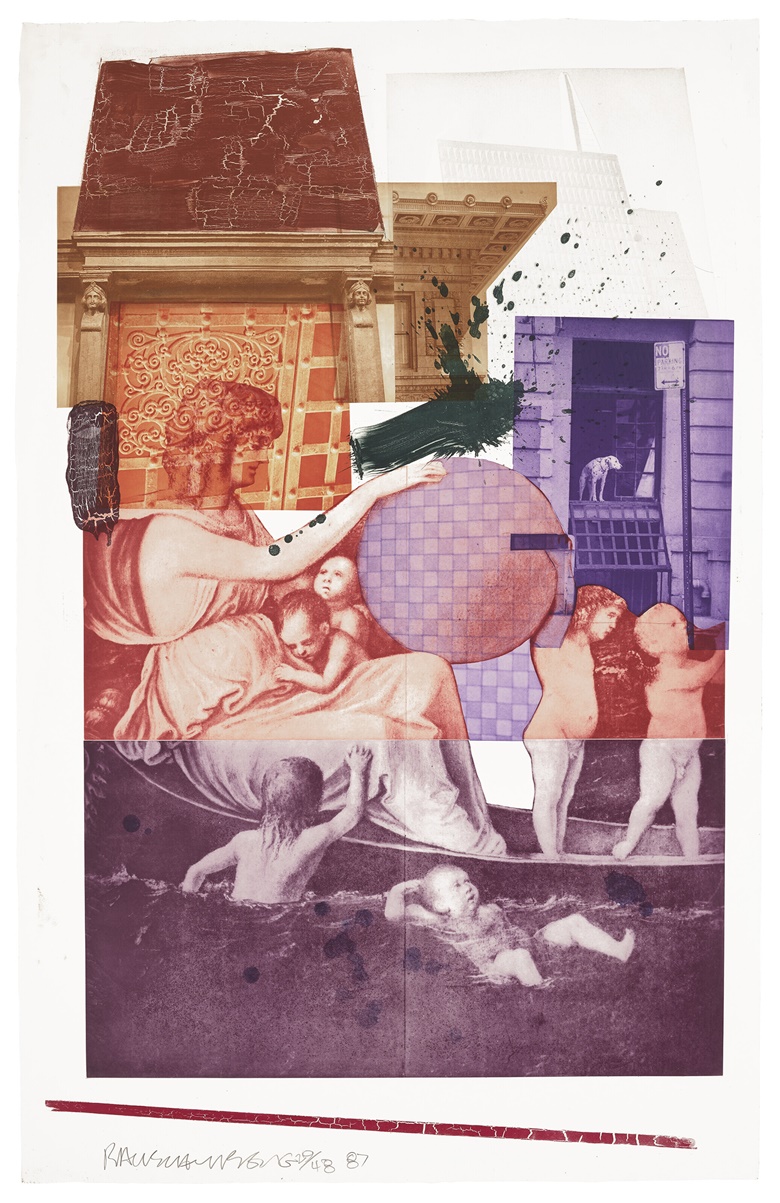
There are studios that have been historically important both for the technical evolution of printmaking and for the piece of work that was produced there — Tyler Graphics is a famous case. As a result, many collectors follow a particular studio and collect many of the publications that have been produced there.
Some printers and publishers use a blindstamp which is an embossed, inked or stamped marker in the paper to mark that an edition was printed at their studio.
- 7
The majority of the prints sold at Christie's are signed — though not all prints are issued with a signature. Warhol and Picasso both stamp-signed some of their prints, and some larger portfolio editions were only signed on the title folio. Don't be alarmed if a print is only initialled. Information technology doesn't hateful that it is worth less — indeed, some artists only initial their prints, such as Richard Diebenkorn and Lucian Freud.
- 8
A history of the greatest printmakers in fine art history would include some of the nigh significant artists of the past 500 years — from Albrecht Dürer to Rembrandt, Toulouse-Lautrec, Picasso, Warhol and Johns. These artists were non only interested in using printmaking to create iconic images, but advanced the medium through innovation. Picasso invented totally new ways of printing; Warhol pushed the printers he worked with throughout his career; and Johns continues to create new and heady prints in his 80s.
As a result, the history of printmaking is also a timeline of technological change and reinvention — from the emergence of basic engraving techniques in the 15th century to digital printing in the 21st.
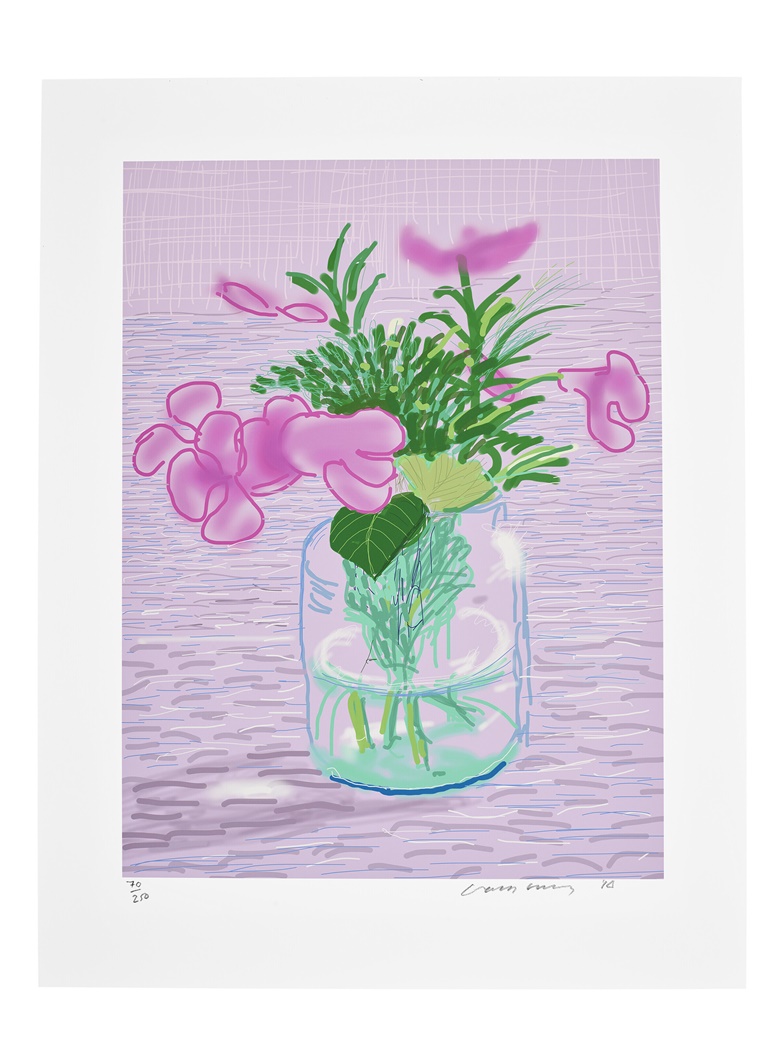
- nine
The function of prints in a collection can be equally multifaceted as prints themselves. They can be a manner of edifice a more than comprehensive collection that tells a more consummate story most an artist's practice — often featuring themes and compositions constitute in paintings or sculptures. For example, prints by Picasso and Johns evidence an development of dissimilar subjects, but also reveal the growth of their skill as printmakers over the course of their careers.
Prints can besides present the opportunity to ain an accurate and iconic subject without a seven-effigy price tag attached to information technology. Prints can also be a great way to get started — a style to acquaint yourself with styles and artists in the same mode as other mediums but at a different price point.
- 10
How you frame your print is the most important long-term decision yous make when it comes to caring for and keeping the slice. Brand sure you go to a reputable framer: information technology's worth paying for a impress to exist properly mounted using the correct materials, and many are not as expensive equally yous might think.
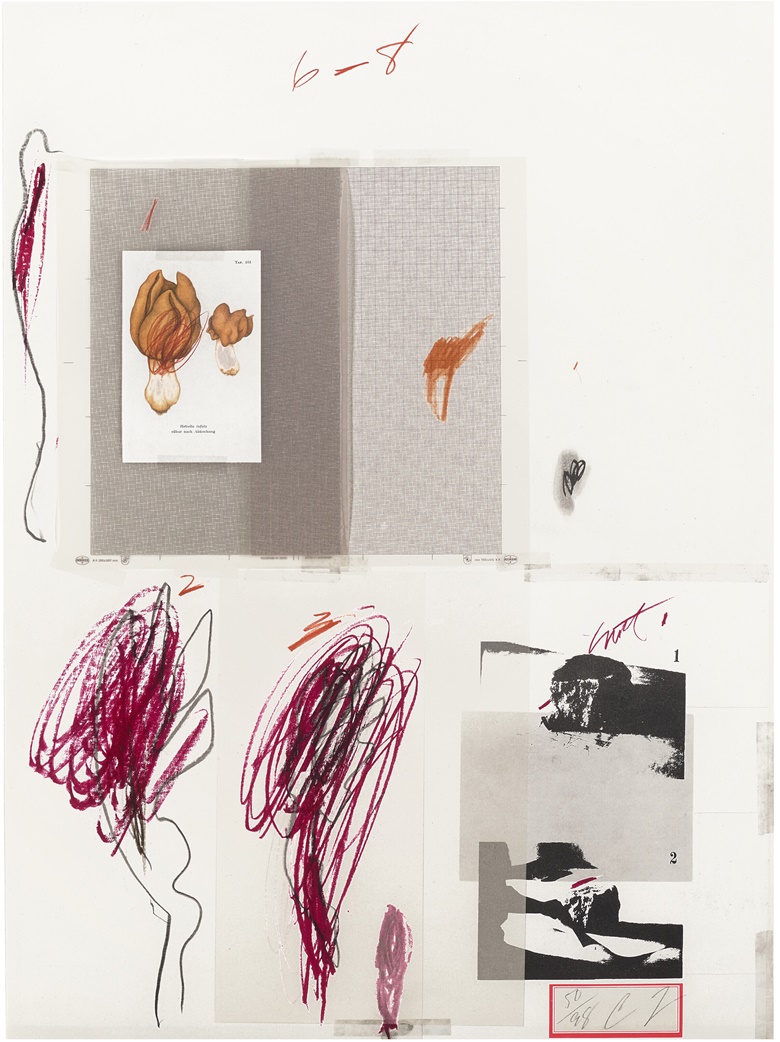
Three fundamental tips: if a impress has vivid colours, don't hang it in straight sunlight; ensure a print is kept away from whatsoever source of moisture; don't trim the canvas to effort to fit it in a smaller frame. Framing is something our squad is happy to talk over with you — nosotros're very used to beingness asked these questions.
- 11
Editions are sold throughout the yr at Christie's. We hold sales in New York in March and July alongside sales in Mail service-War and Contemporary Fine art that focus on lower-priced prints by the greats of postal service-war and contemporary art. Our dedicated prints sales in Apr and October in New York and March and September in London are an opportunity to view the broadest range of works in our market. Nosotros also concord a number of online sales each yr with all sorts of subjects, ranging from sales by artist or portfolio to thematic sales devoted to particular time periods or compositions.
The specialists who work in Christie's Prints & Multiples department are always happy to explain more nigh the medium. Our public views in the Christie'south galleries offer a slap-up opportunity to become to know united states of america, and give you the chance to see the huge range of works we offer in person. Unlike a museum, nosotros're always happy to accept a work out of its frame to enable you to take a closer wait at it. A impress specialist can discuss condition in front of the object itself, and elaborate on the nature of that item edition. We beloved sharing our passion with others.
Source: https://www.christies.com/features/Prints-Collecting-Guide-7471-1.aspx
0 Response to "What Type of Art Was Popular When Roy Lichtenstein First Start Creating His Art in the 1960s?"
Post a Comment